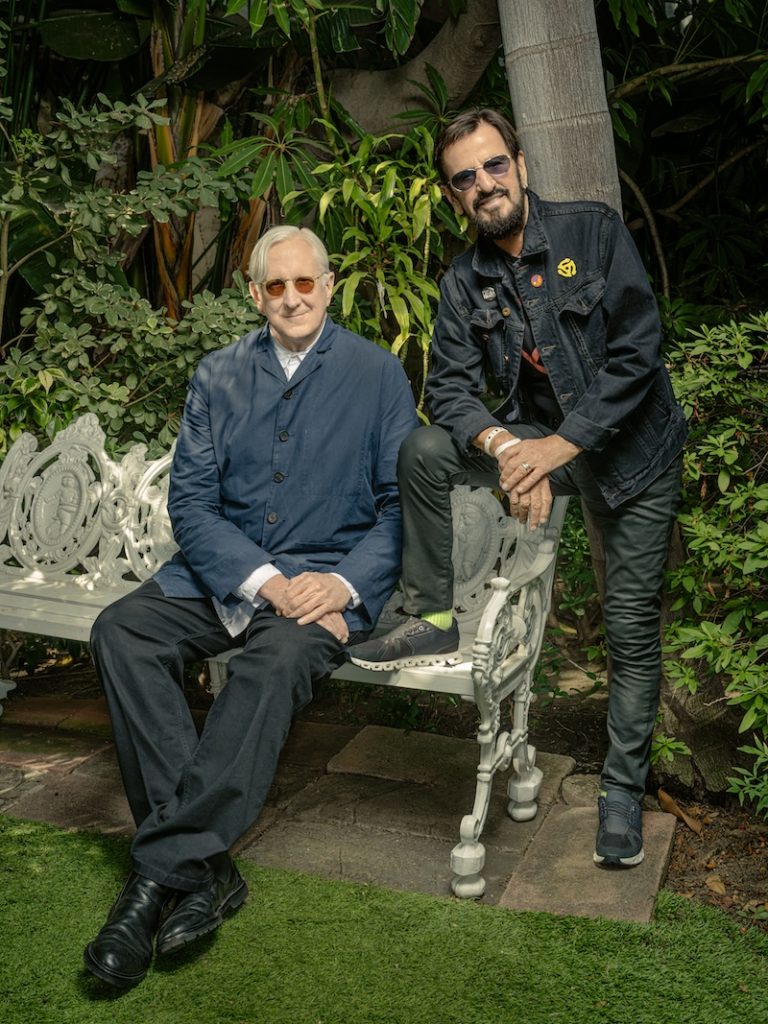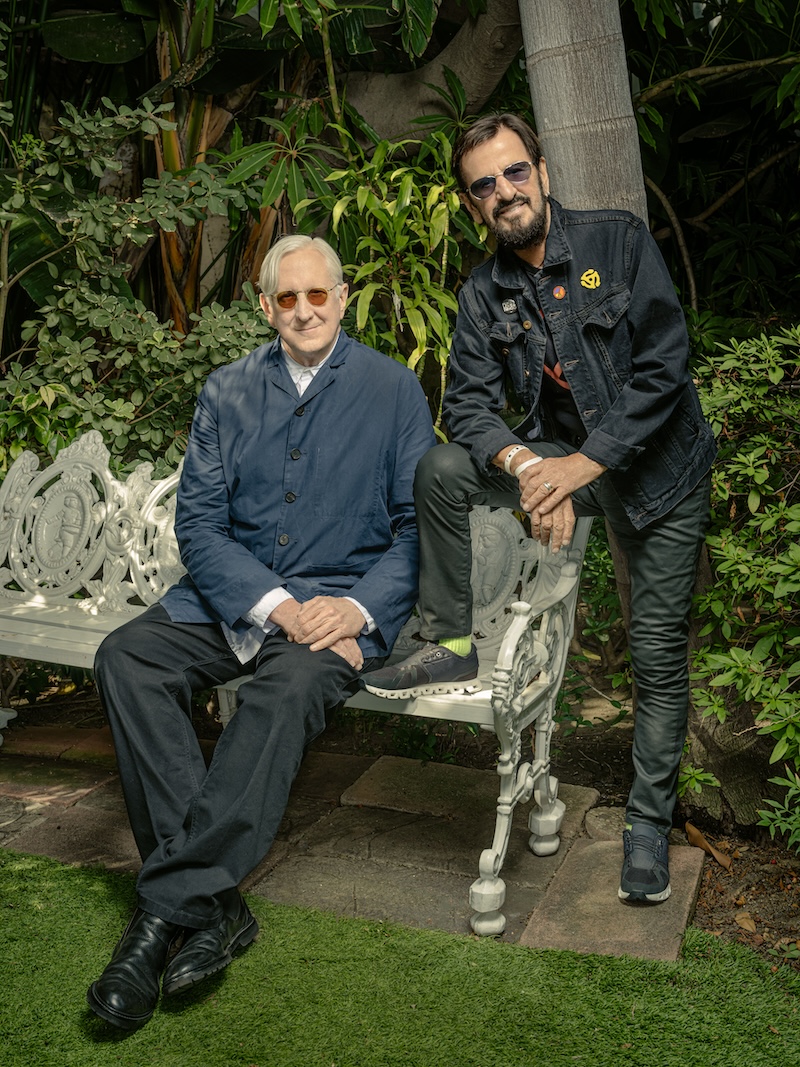
Nashville, TN (July 21, 2025)—Ringo Starr was always the country Beatle. Whether it was the band’s takes on Buck Owens’s “Act Naturally,” Carl Perkins’s “Honey Don’t,” their own composition “What Goes On?,” or Ringo’s own “Don’t Pass Me By,” the roots established for him with the arrival of American country records, brought to the Liverpool seaport by merchant seamen, was always in his veins. And in 1970, after working with pedal steel master Pete Drake on George Harrison’s All Things Must Pass, he accepted Drake’s invitation to come to Nashville and record his own country LP, Beaucoups of Blues.
“When I think of Ringo, I think, of course, of rock and roll—but I also think of rockabilly, and I think of country music,” says T Bone Burnett, himself one of music’s greatest purveyors of American Music (or Americana, as some call it) and the producer of Starr’s newest venture into the genre, Look Up (Lost Highway Records), released on January 10. “Even his name—‘Ringo Starr’—sounds like the Sheriff of Dodge City, Kansas,” he laughs.
The two have known each other since first meeting on an airplane headed to Houston, where they both appeared in the all-star revue, The Night of the Hurricane, on January 25, 1976. Over the years, they would bump into each other here and there, becoming pals, particularly while T Bone was still living in L.A.
In March 2020, at the beginning of the pandemic, T Bone moved to Nashville, closing down Electromagnetic Studio, the studio he and longtime engineer Michael Piersante built at his home in Brentwood in 2002—outfitted with Sunset Sound’s original Studio 1 Bushnell console no less. Once he settled into Music City, he set up two new studios with Piersante’s help—Electromagnetic East and West in Nashville, with West based in the back house at his home there, and East being a small overdub studio over the garage of his office in the Germantown part of Nashville.
“Beatles ’64” — A Mix Film Review
In the absence of Piersante, who stayed in Los Angeles (though comes to Nashville for the occasional project), T Bone began working with engineer Mike Stankiewicz, a former staff engineer for many years at the renowned Sound Emporium, on recommendation of Colin Linden, a blues guitarist with whom T Bone and Piersante often worked. After studying recording and production, Stankiewicz spent a few years working in film audio, including, starting in 2021, projects with T Bone, with whom he soon found himself tracking music projects and handling his day-to-day recording.
On November 10, 2022, the producer was in Los Angeles, and attended the launch of Olivia Harrison’s poetry book, Came the Lightening, at the Sunset Marquis Hotel, which Ringo also attended. The two chatted, talking about their current work. “He said, ‘I’m making EPs these days. Why don’t you write me a song?’ to which I answered, ‘Absolutely. I’d love to,’” T Bone recalls. At the time, Ringo was working with artist/producer Linda Perry, on what would be his Crooked Boy EP, which was certainly solidly in the rock genre. “But I didn’t know that.”
Long a fan of Ringo’s solo scenes in The Beatles’ film, A Hard Day’s Night, with his quiet visits to a London canal and along Portobello Street, T Bone notes, “Ringo is, by far, the most sympathetic of all The Beatles. In those scenes in the film, he has this ability to be beautifully vulnerable, in front of the camera. So I thought, ‘I’ll write Ringo a slightly wistful tune.’ I wanted the song to have some of that same feeling,” as well as give it a Gene Autry country and western vibe.” The result was “Come Back.”
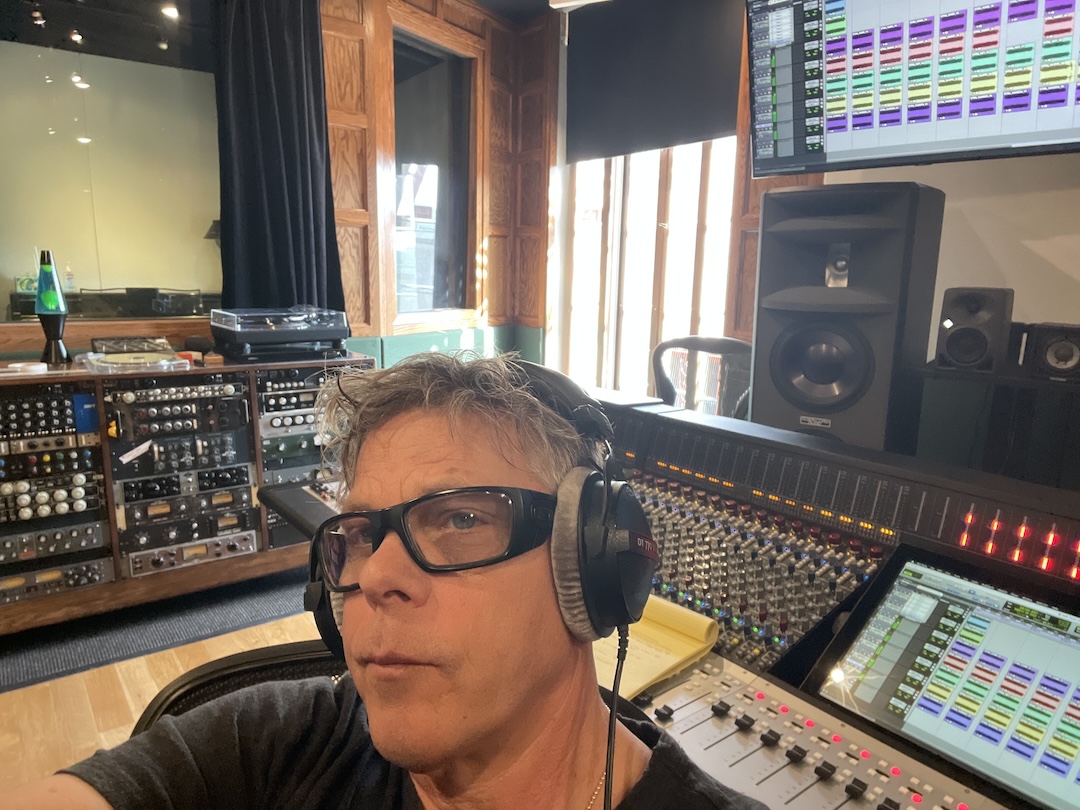
In February, 2023, he got together with Piersante at their room at Village Recorders, which they call “Studio Z,” to put together a demo recording to share with Ringo. T Bone had met the engineer in the mid-90s, when Piersante was a second engineer at Sunset Sound. After assisting T Bone and Neal Aaron on Jakob Dylan’s Bringing Down the Horse sessions, the engineer says, “He liked me, and he would request me as his assistant, whenever he would come in. And that led to me eventually being a first engineer on a few projects,” beginning to work full time in 1999, just before he recorded and mixed T Bone’s No. 1 Grammy-winning O Brother, Where Art Thou film and soundtrack album.
Studio Z was set up, upstairs on Village’s second floor, the year after T Bone’s departure. “It’s mainly a mix room, but it has a pretty decent-sized overdub booth, too,” the engineer explains. The room features a Neve Genesys Black console, retrofitted with Neve 1084 EQ modules, as well as classic Neve 1073 mic preamps: “It’s a hybrid desk; It’s runs Pro Tools, which is in the center section, but the board spills out to the sides, and is completely analog,” something which is imperative to T Bone.
“I don’t like anything digital,” the producer states, “so one of the main things Mike Piersante and I do is, we hypersaturate all of these recordings with analog signal, to create an extremely dense resonance because digital doesn’t comprehend atmosphere.” That’s accomplished using all tube Teletronix LA 2As a Fairchild limiter, and API 550 and 550A EQs. “We create a tremendous amount of harmonic distortion,” he adds. “It’s not distorted; it’s clear, but it creates a lot of overtones. We try to make extremely resonant records.” The same setup is used in his work with Stankiewicz in Nashville, as well.
Discover more great stories—get a free Mix SmartBrief subscription!
The pair tracked a simple track—just T Bone on acoustic and a vocal—on February 11, with Piersante mixing it with his assistant, Eddie Roberts, before sending the track off to Ringo to hear and give a green light to, which he did. “He approved it, and I think we might have changed the key, to suit his range better,” T Bone notes.
The duo then flew back to Nashville, where they began building the final tracks in Studio A at East Iris Studios, the former House of Blues Studios. On March 4, with Michelle Freetly assisting, T Bone recut his guitar and his guide vocal, with Colin Linden, known for his slide work, adding a beautiful resonator part. A few days later, on March 7, Stuart Duncan added a fiddle, and Rory Hoffman a mandolin (as well as some fine whistling, which Ringo replaced not long after).
That same day, an upright bass part was recorded by musician Dennis Crouch. “Dennis and I have been playing together for 25 years,” T Bone notes.
The following day, Piersante mixed that new version of the song and sent it to Ringo’s engineer, Bruce Sugar, who then, on March 14, recorded Ringo’s replacement vocal—and whistling—and sent it back to Piersante. No drums appear on the song—the only track without drums on the final album. “When he was doing that vocal,” Bruce notes, “he was really exposed, because of the absence of drums—but he really felt that vocal when he sang it. He felt really good about it.”
For the moment at least, it was thought that the song was finished. Piersante and T Bone sent the final mix back to Sugar, and as T Bone remembers it, “I didn’t hear from him for a while. I think he got it, and it didn’t fit the rock EPs he was doing so I don’t think he knew what to do with it.” Beloved as it was by the artist, it sat in his back pocket for a bit.
Later in the fall of that year, T Bone finally did hear back. “He came to me with the idea, ‘You know, I love this song. Let’s do a country EP.’ And I said, ‘Okay, great. Let’s do it.’”
Ringo and Bruce had recorded a few candidate songs for such a disc, including two, later in October 2023, by some well-known songwriter colleagues with whom they had worked before, and recorded with some great session player friends (which hopefully, one day, will see release). And there was a fourth track, written by Ringo and Bruce themselves.
Bruce first began working as Ringo’s engineer back in 2002, when producer Mark Hudson was crafting Ringo’s 2003 album, Ringorama. Those sessions began with engineer Paul Santos, but when Santos had to leave to work an Aerosmith gig, Grammy-winning songwriter Jeff Silbar (“Wind Beneath My Wings”), a mutual friend, recommended him to Hudson.
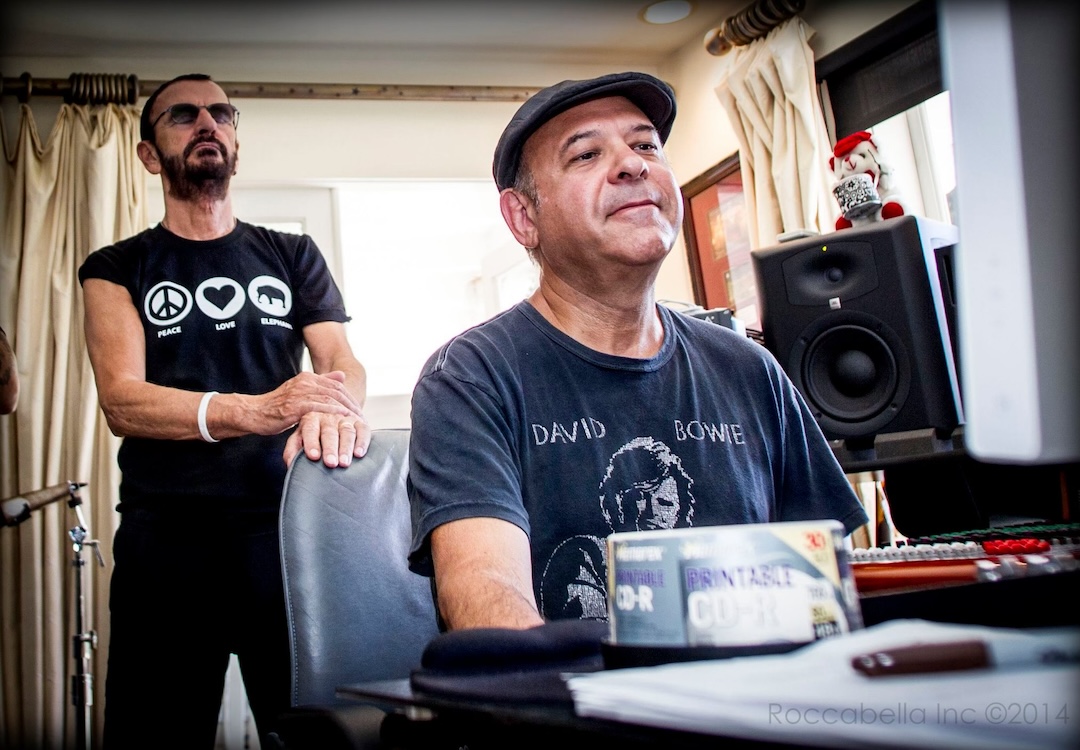
When Ringo and Hudson parted ways at the end of 2006, during the making of Liverpool 8, whose production was taken over by Dave Stewart, Bruce continued tracking here and there for Ringo, occasionally recording with him at his home studio in the English countryside. The facility there was built around 1998, during the recording of Ringo’s Christmas album. “His neighbors were Eric Clapton, David Gilmour and Mike Rutheford,” the engineer remembers. “So if you needed a guitar player….”
Now, with the absence of a studio to work in locally, Ringo had Bruce set up a basic Pro Tools rig in the Starrs’ house in Beverly Hills, which they had moved into in 1992. “It was a small setup, just in one his bedrooms,” he says. “We didn’t even have his drums set up in there. We were just doing some MIDI stuff.”
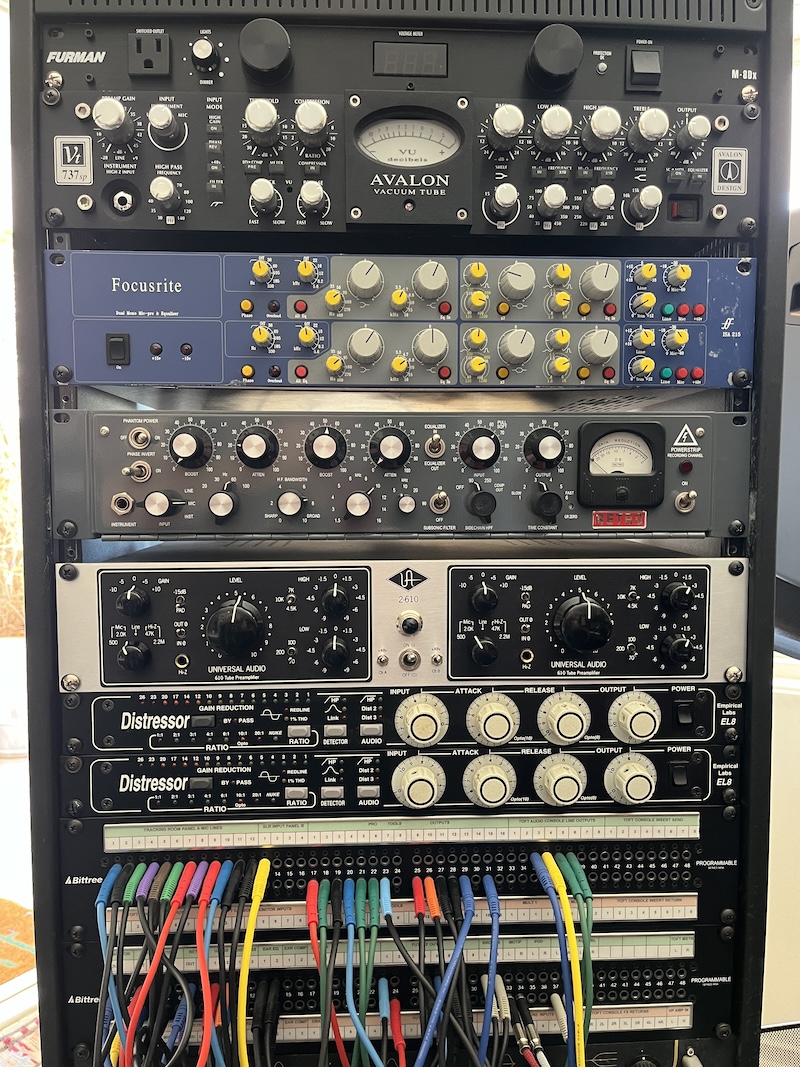
The two began working on Ringo’s Y Not album there in late 2008, into 2009, occasionally turning to friends for some nice overdubs. “I remember saying, ‘Well, it would be nice to put a guitar on this track,’ and he goes, ‘Yeah, I got a guitar player out in my guest house.’ And in walks Joe Walsh! That was the first time I met him.” [It would not be the last—Bruce, in fact, engineered Walsh’s 2012 album, Analog Man.] In 2011, before beginning the next album, Ringo 2012, “Ringo decided he wanted a better studio,” which, it was decided, would be built into the guest house. “It really didn’t take much. We moved out the bed in the guest house bedroom and moved the drums in.” The small living room, its window overlooking the pool, became Bruce’s control room, into which the Pro Tools rig and monitors were moved, with cables simply placed on the floor from room to room. Guitars and keyboards are recorded in the same room where Bruce is setup, behind him. And the kitchen is used as the vocal “booth.” There was no—and remains no—acoustic treatment anywhere, in any room, even the drum room.
By 2014 or so, prior to the UK house’s sale, the studio there was closed and the equipment brought over for installation in the guest house studio (which is known, officially, as “Rockabella West,” Rockabella having been the name of the Starrs’ British home). The console is a 16-track Toft Audio Designs ATB Series console, which Bruce uses strictly for monitoring, which he does through a pair of JBL LSR 43s. “We have some outboard preamps, which I use for everything—Focusrite, Neve, API, United Audio—and those feed directly into Pro Tools,” he explains. “That’s everything. That’s the whole deal.”
The two continued to record several full-length albums over the years at the studio, as well as, with the arrival of the pandemic, several EPs. As mentioned, there were already three other songs besides T Bone’s “Come Back” that were in contention for the country EP. In addition to the two recorded in October, on July 18, Ringo and Bruce tracked a beautiful new song, “Thankful,” co-written by the pair. “A lot of those lyrics are Ringo’s,” Bruce states, of the wonderful thoughts of gratitude Ringo lives by. “And his singing is very soulful—you can feel it in his vocal.”
The recording included not only Ringo’s drums and vocal, but a bass part by a very well-known bassist (no, not THAT one. . . ), background vocals by a number of other important friends, and both an acoustic guitar and dobro by Greg Leisz.
Even though that EP actually got as far as mastering in November by the legendary Bernie Grundman himself for a possible March 2024 release, by the time Ringo asked T Bone about producing the EP later that fall, he was wanting to consider other candidates as well. “Ringo said, ‘Well, do you have any more tunes?’” T Bone turned to Billy Swan, well known for his 1974 hit, “I Can Help,” who he’s known since 1967. “We met Kris Kristoferson and all played together in Fort Worth,” says the producer. “We are close friends—Billy and I have written songs together off and on for 50 years—so I called Billy, and he had ‘You Want Some.’ And I thought, ‘God, that sounds exactly like Ringo. That’s a good one for him.’ I sent that one to Ringo, along with one other, ‘Never Let Me Go,’ which was the second song I wrote for him.”
He and Swan also co-wrote “I Live For Your Love,” Swan’s lyrics delivering another key part of Ringo’s way of life, living in the now. In the meantime, T Bone continued writing but also brought in an old friend to help.
